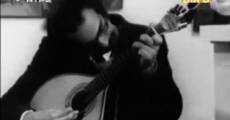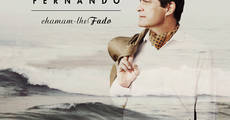History of Fado
Page 1 of 4
 Born in the popular contexts of the 1800s Lisbon, Fado was present in convivial and leisure moments. Happening spontaneously, its execution took place indoors or outdoors, in gardens, bullfights, retreats, streets and alley, taverns, cafés de camareiras and casas de meia-porta. Evoking urban emergence themes, singing the daily narratives, Fado is profoundly related to social contexts ruled by marginality and transgression in a first phase, taking place in locations visited by prostitutes, faias, sailors, coachmen and marialvas. Often surprised in prison, its actors - the singers - are described in the faia figure, a fado singer guy, a bully of a rough and hoarse voice with tattoos and skilled with a flick knife who spoke using slang. As we will see, fado’s association to society’s most marginal spheres would definitely make the Portuguese intellectuals reject it profoundly.
Born in the popular contexts of the 1800s Lisbon, Fado was present in convivial and leisure moments. Happening spontaneously, its execution took place indoors or outdoors, in gardens, bullfights, retreats, streets and alley, taverns, cafés de camareiras and casas de meia-porta. Evoking urban emergence themes, singing the daily narratives, Fado is profoundly related to social contexts ruled by marginality and transgression in a first phase, taking place in locations visited by prostitutes, faias, sailors, coachmen and marialvas. Often surprised in prison, its actors - the singers - are described in the faia figure, a fado singer guy, a bully of a rough and hoarse voice with tattoos and skilled with a flick knife who spoke using slang. As we will see, fado’s association to society’s most marginal spheres would definitely make the Portuguese intellectuals reject it profoundly.Stating the communion of ludic spaces between the bohemian aristocracy and the most disfavoured fringes of Lisbon’s population, the history of fado crystallized into myth the episode of the amorous relationship between the Count Vimioso and Maria Severa Onofriana (1820-1846), a prostitute consecrated by her singing talents, who would soon transform into one of greatest myths of the History of Fado. In successive image and sound reprises, the allusion to the involvement between a bohemian aristocrat with the fado singing prostitute would cross several sung poems and even the cinema and the theatre or the visual arts - beginning with the novel A Severa, by Júlio Dantas, published in 1901 and transported to the silver screen in 1931 - the first Portuguese sound film, directed by Leitão de Barros.
Fado would also conquer ground in festive events connected to the citys popular calendar, beneficence parties or cegadas - amateur and popular theatrical presentations generally performed by men on the street, in night feats, and popular associations. Although this sort of presentation was a famous entertaining form of Lisbon’s Carnival, enjoying popular support and often with strong intervening characters, the censorship regulation in 1927 would strongly but irreversibly contribute to the extinction of this type of show.
The Teatro de Revista [a sort of vaudeville theatre], a typical theatre genre from Lisbon born in 1851, would soon discover fado’s potential. In 1870, fado began to appear in its music scenes and from there projects itself to a broader audience. Lisbon’s social e cultural context, with its typical neighbourhoods, and bohemia, assumed an absolute protagonism in Teatro de Revista. Ascending to the theatre stages, fado would animate the Revista, developing new themes and melodies. Teatro de Revista was orchestrated and filled with refrains. Fado would be sung by famous actresses, and renowned fado singers, singing their repertoires. Two different approaches to fado would become recorded in history: the danced fado stylized by Francis and the spoken fado of João Villaret. A central figure in the history of Fado, Hermínia Silva conquered fame on the theatre stages in the 1930s and 1940s, adding her unmistakable singing gifts to those of a comical actress and revisteira.
Fado’s appropriation field broadened in the last quarter of the 19th century. This was the time of the formal stabilization of the poetic form of the “ten-verse stanza”, a quatrain made of four stanzas of ten verses each, on which fado would get its structure and later develop into other variants. This is also the period of the definition of the Portuguese guitar - progressively diffused from the urban centres to the country’s rural areas - in its specific component as fado companion.
In the first decades of the 20th century, fado began to be gradually divulged and gained popular consecration through the publication of periodicals on the subject and the consolidation of new performing venues in a broad network that began incorporating Fado in its agenda with a commercial perspective, fixating private casts which would often form embassies or artistic groups for tours. In parallel the relationship of Fado with the theatre stages was consolidated and the performances by fado singers at Revistas musical scenes and operettas multiplied.
In fact, the appearance of fado singing professional companies in the 1930s allowed promoting shows with great casts and their circulation in theatres north and south of the country, and even in international tours. That was the case of “Grupo Artístico de Fados”, with Berta Cardoso (1911-1997), Madalena de Melo (1903-1970), Armando Augusto Freire, (1891-1946) Martinho d’Assunção (1914-1992) and João da Mata, and “Grupo Artístico Propaganda do Fado”, with Deonilde Gouveia (1900-1946), Júlio Proença (1901-1970) and Joaquim Campos (1899-1978), or “Troupe Guitarra de Portugal”, with Ercília Costa (1902-1985) and Alfredo Marceneiro (1891-1982) among others.
Related Articles
Add Comment










